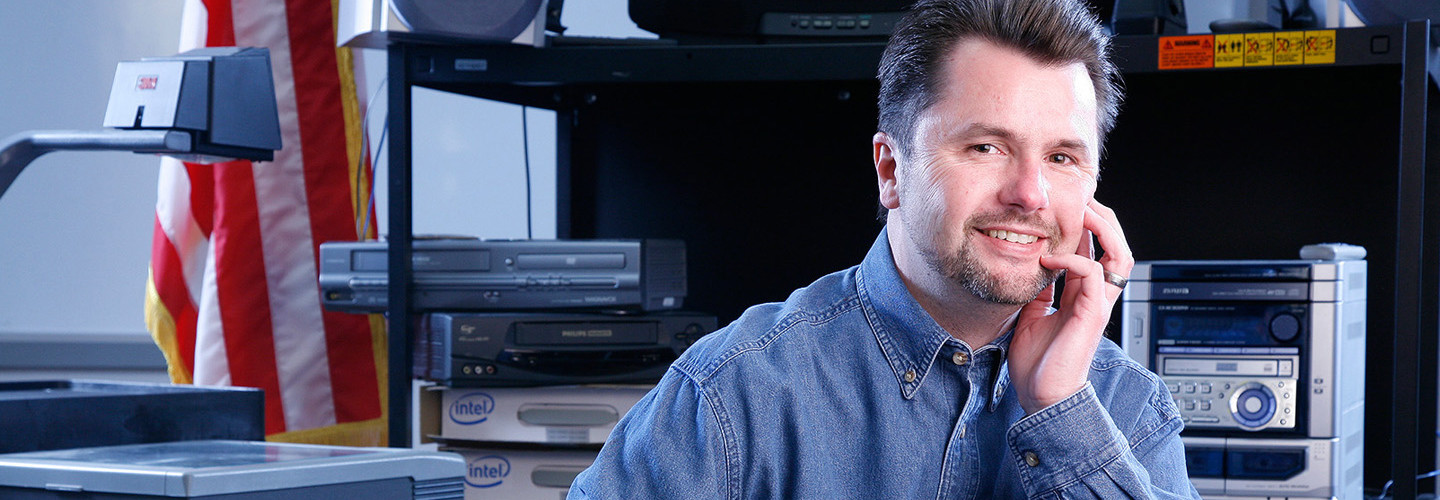How ubermix Is Changing the K–12 IT Landscape
Many schools are under pressure to roll out one-to-one computing programs but lack the budget to pay for it.
Four years ago, the Saugus Union School District was in the thick of this problem. The 15-school district in Santa Clarita, Calif., wanted to offer as much technology to its 10,500 K–6 students as possible, but it had to do it cheaply — and minimize the amount of support the machines would require. Because standardized assessments begin for students once they enter fourth grade, SUSD officials decided that equipping students in grades four through six with netbooks made the most sense.
Director of Information Services and Technology Jim Klein found his answer on how to do it cost-effectively and efficiently in Linux. With the help of a federal technology grant, Klein created ubermix, an Ubuntu Linux–derived operating system with more than 60 open-source applications that's now running on 3,000 SUSD devices — mostly older ASUS and Acer netbooks that came with Microsoft Windows preinstalled.
"We wanted ubermix to be as reliable and easy to use as a cell phone, but still have the power of a fully functional operating system," Klein explains. "We also wanted to give teachers confidence that the technology would work."
A netbook running ubermix boots up almost instantly, with every app a student or teacher needs just one or two clicks away. Klein designed the system to store user data and the software in separate partitions; if a computer malfunctions, the user can wipe the OS and apps from the machine and restore fresh copies in 20 seconds — without losing data.
Those design choices empower SUSD students in a couple of ways, Klein continues. "We wanted to be able to give kids administrative rights to machines, so they could tinker with them and figure out how they work without any significant risk," he says. "We also wanted to give them the opportunity to fail, but to fail gracefully and recover quickly."
Because Linux is a lightweight operating system that demands fewer hardware resources, it can run on older, less powerful machines than other operating systems require. As open-source software, it's free to use. And because viruses rarely target Linux, the machines are virtually maintenance free.
By 2010, the district had discovered another benefit of giving fourth-graders netbooks as part of its Student Writing Achievement Through Technology Enhanced Collaboration initiative. According to a study by the University of California, Irvine, the ubermix-powered devices helped raise student performance on standardized writing and language tests by an average of 33 percent.
Klein soon began publicizing the operating system and built a website that details how it works (ubermix.org). Today, 44 districts from Arizona to Argentina have deployed machines running ubermix, and more than 30,000 students use it every day. Indeed, ubermix has become more than a do-it-yourself OS; it's a movement.
Linux Lessons
Le Grand Union High School District adopted ubermix four years ago. The California district is one of the state's poorest, so the ability to install a reliable OS on low-cost machines was a godsend, says IT Director Mike Magboo.
"There's very little these machines can't do," he says of the 100 netbooks and 70 desktop computers that are currently running ubermix. Magboo is pleased with the OS, but notes that the district does have some legacy Windows apps that must run inside a Remote Desktop Protocol client on the ubermix-powered devices.
Linux accounted for 1.21 percent of the total desktop operating system market in January 2013, up from 0.98 percent in March 2012.
SOURCE: Net Applications
When you're operating in a Linux environment, there are bound to be hiccups. Hardware compatibility is one example, says Colin Matheson, educational technology coach and webmaster for Carmel (Calif.) Unified School District, which runs ubermix on 40 percent of its 1,000 computers. "Linux drivers are hit or miss," he explains. "You could buy a notebook, install Linux and then discover that the wireless card won't work with the OS. You want to really test it before you buy 4,000 notebooks assuming it will just work."
Although ubermix is perfect for devices with small form factors, districts sometimes want to have more powerful ones on hand. That's been the case for Oak Lawn–Hometown School District 123, a suburban Chicago district with about 2,000 ubermix-powered machines. "You can do light-to-medium video editing on the netbooks, but you can't use them for heavy-duty editing," says CIO Ben Grey. "That's why we still have carts with notebooks for some multimedia projects."
Still, the netbooks "are perfect for 90 percent of what kids want to do," he continues. "They let kids be creative, collaborative and take ownership of their learning."
Getting into the Mix
SUSD's Klein says he had little trouble getting teachers on board once they understood that they wouldn't be forced to spend valuable classroom time troubleshooting cranky technology. "Our approach from the beginning was to tell them, 'This is a new category of device,' " he explains. "It's super easy to use, it's got all the tools kids need to be successful, as well as the flexibility to let them explore and experiment. Flexible, scalable, easy to use, reliable — these are the things we were aiming for, and I think we hit them all pretty well."
Spreading the Wealth
The Kramden Institute of Durham, N.C., refurbishes old computers and distributes them to deserving students in grades 3 through 12 who can't afford a computer of their own. This year, the organization will be loading up about 3,000 refurbished machines with ubermix, the custom operating system that Director of Information Services and Technology Jim Klein developed for Saugus Union School District in Santa Clarita, Calif.
Michael Abensour, Kramden's executive director, likes ubermix's small footprint, fast installation and restores, malware resistance and no-cost price tag. The operating system's ability to run well on older equipment is also compelling.
"Some of our volunteers and staff were skeptical," he says. "Yet, when shown the intuitiveness of ubermix, its flexibility as an open-source platform, and the advantages it will offer our student recipients, even the most critical were quickly won over."








